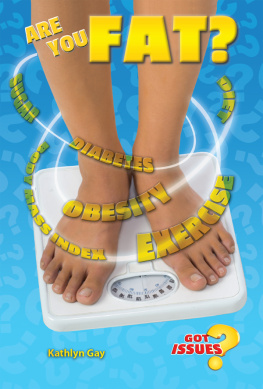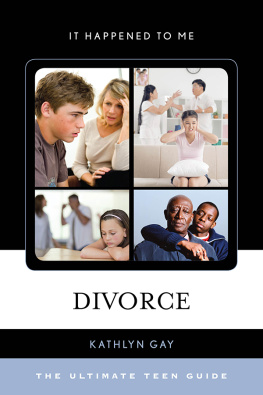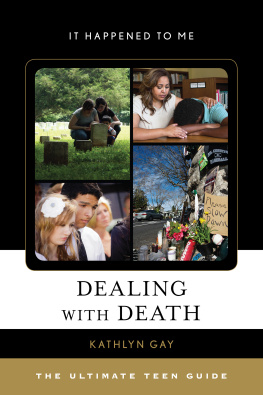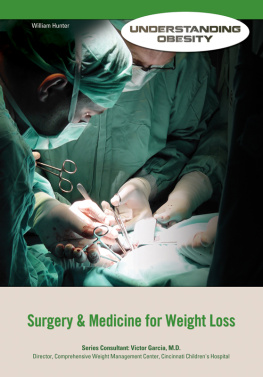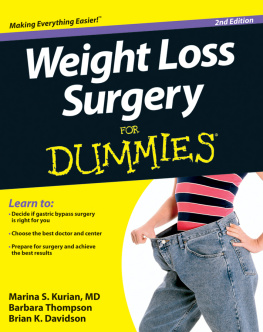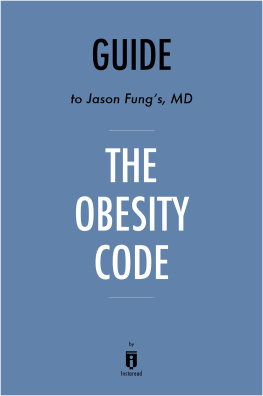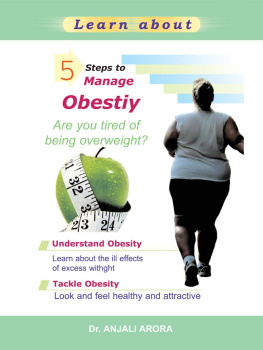Kathlyn Gay - Are You Fat?. The Obesity Issue for Teens
Here you can read online Kathlyn Gay - Are You Fat?. The Obesity Issue for Teens full text of the book (entire story) in english for free. Download pdf and epub, get meaning, cover and reviews about this ebook. year: 2014, publisher: Enslow Publishers, genre: Politics. Description of the work, (preface) as well as reviews are available. Best literature library LitArk.com created for fans of good reading and offers a wide selection of genres:
Romance novel
Science fiction
Adventure
Detective
Science
History
Home and family
Prose
Art
Politics
Computer
Non-fiction
Religion
Business
Children
Humor
Choose a favorite category and find really read worthwhile books. Enjoy immersion in the world of imagination, feel the emotions of the characters or learn something new for yourself, make an fascinating discovery.
- Book:Are You Fat?. The Obesity Issue for Teens
- Author:
- Publisher:Enslow Publishers
- Genre:
- Year:2014
- Rating:5 / 5
- Favourites:Add to favourites
- Your mark:
- 100
- 1
- 2
- 3
- 4
- 5
Are You Fat?. The Obesity Issue for Teens: summary, description and annotation
We offer to read an annotation, description, summary or preface (depends on what the author of the book "Are You Fat?. The Obesity Issue for Teens" wrote himself). If you haven't found the necessary information about the book — write in the comments, we will try to find it.
Are You Fat?. The Obesity Issue for Teens — read online for free the complete book (whole text) full work
Below is the text of the book, divided by pages. System saving the place of the last page read, allows you to conveniently read the book "Are You Fat?. The Obesity Issue for Teens" online for free, without having to search again every time where you left off. Put a bookmark, and you can go to the page where you finished reading at any time.
Font size:
Interval:
Bookmark:
Since the 1960s, people in the United States and other industrialized countries have become heavier, on average. In fact, Americans are some of the most overweight people in the world. Find out what has caused the obesity epidemic, and learn about the possible solutions, including diets, exercise, and surgery. Author Kathlyn Gay examines the benefits and dangers of each method, while stressing the importance of moderation, a healthy diet, and keeping active.


When Christianne was thirteen years old, she weighed 180 pounds, and faced daily taunts and jeers from classmates. Kids at school called me stupid things like tub of lard or fatty. Some kids would yell moo, she told a Choices reporter, adding It really hurt.
Teenager Kendall Brasch, who weighed 265 pounds, said she had tried numerous diets to reduce her weight, but nothing worked, according to a report in the Seattle Times. In her words, I was so depressed I didnt care about anything. I would go to school wearing pajamas, wouldnt talk to anyone and come home and sit in front of the TV.
Like adolescent girls, boys also suffer when they are overweight and say it is clear to them that being fat is not acceptable to their classmates. They describe incidents of harassment, such as being called fatty-fatty-two-by-four, army tank, or gun boat. One young man told of being picked on at lunch time, when others at his table threw food at him, calling him a pig and demanding that he eat the scraps or suffer a beating after school.
Whether male or female, some young people who are extremely overweight drop out of school and will not leave the house unless it is absolutely necessary. They may also be teased at home when brothers, sisters, or other relatives label them with humiliating terms: fat chick, orca, big chops, and on and on. Early in their lives, they learn that those who are overweight are likely to be rejected. They become loners and have low self-esteem; they feel guilty because they cannot lose weight. Some say they reach a point where they hate to look at themselves in the mirror and dread buying clothes. Many teens tell about constant dieting or developing eating disorders in their efforts to control their weight.
On almost any given day, you can easily find a magazine or newspaper article, Internet posting, or TV news report that tells about the pain of children, teenagers, and adults who have been ridiculed, harassed, bullied, and sometimes physically assaulted because of weighing more, often much more, than their peers. In recent years, print and electronic media have also called attention to the health risks and economic costs of being fator in todays terminology: being overweight or obese.
Although the terms fat, overweight, and obese are bandied about by the media, the words are not synonymous. In medical terminology, fat refers to the billions of fat cells in the body (40 billion in an average adult), and these cells affect basic body functions, according to the U.S. National Institutes of Health (NIH):

Calipers are used to measure the thickness of a fold of skin and the fat underneath it.
Overweight refers to an excess of body weight compared to set standards. Excess weight may come from muscle, bone, fat, and/or body water. Obesity refers specifically to having an abnormally high proportion of body fat. A person can be overweight without being obese, as in the example of a bodybuilder or other athlete who has a lot of muscle. However, many people who are overweight are also obese.
A medical encyclopedia simplifies the definition, stating that obesity means weighing 20 percent or more than is considered desirable for a persons height, age, gender, and bone structure.
While the news report pointed out Amandas and doctors concerns, it did not indicate how she might eventually lose weight. There was little doubt, however, that unless she could shed pounds she was at risk for life-threatening health problems such as heart disease and stroke. She already suffered from diabetes and liver disease. Not only does obesity have adverse effects on health during the teen years, but obesity also can extend throughout a lifetime if not checked, according to TeenHelp.com, and can be a risk factor for common health conditions such as:
- Type 2 diabetes
- Asthma
- Sleep problems, including sleep apnea
- Orthopedic (bone) problems due to an inability of the developing bones to support the excess weight
- Hypertension (high blood pressure)
- Heart disease
Additionally, teenage obesity can lead to psychological problems associated with negative body image and social issues associated with being treated as an outcast.
Since the 1960s, Americans and people in other industrialized countries generally have been gaining weight, data shows. In fact, Americans are the second most overweight people in the world. The trend has steadily increased over the years among both genders, all ages, all racial/ethnic groups, and all educational levels. From 1960 to 2000, those considered overweight increased from 31.5 to 33.6 percent among U.S. adults aged 20 to 74. From 2009 to 2010, more than 35 percent of U.S. men and women and 16.9 percent of children were obese, according to a report from the National Center for Health Statistics (NCHS).
Similar increases have been recorded in Canada, although the levels are lower than in the United States. The NCHS reported In 200709, the prevalence of obesity in Canada was 24.1%, over 10 percentage points lower than in the United States.
When health experts determine whether people are underweight, normal weight, overweight, or obese, they may use one of several methods. One is based on tables used for many years by insurance companies showing the desirable weight for ones height. Another is based on measurements of skinfold thickness, using calipers, a device that pinches the skin in various body locations, such as the upper arm, waist, and thigh. Calipers measure the thickness of a skin fold and its underlying fat, shown on a dial or digital readout. These measurements provide an estimate of the total amount of fat on a persons body. However, the accuracy of this method for measuring body fat depends on the skill of the person using the calipers.
The standard most commonly used to learn whether a persons weight points to a health risk is the body mass index (BMI). Someone with a BMI of 18.5 to less than 25 is at a normal weight and at less risk for an illness than those who have a BMI of 25 to 29.9 (indicating overweight) or those who have a BMI of 30 or more (indicating obesity). Generally, adults can figure their BMI by using a chart or a general formula.
The BMI has limits, however. Muscular people such as athletes may fall into the overweight category but not have health risks because they are actually fit. People who have lost muscle mass, such as the elderly, may be in the healthy weight categoryaccording to their BMIwhen in fact they may be at risk for various ailments.
When measuring normal weight for children and teenagers, the BMI standards are different from those used for adults. As children grow, the fat stored in fat cells and organs of the body change. For example, a child might have a high proportion of fat weight at age eleven but have a lower proportion by age thirteen as he or she grows taller. Also, girls and boys differ in their body fat as they mature. So when determining BMI for children and teenagers, healthcare professionals frequently use weight-for-age growth charts, often called BMI-for-age charts (eight for boys and eight for girls).
Font size:
Interval:
Bookmark:
Similar books «Are You Fat?. The Obesity Issue for Teens»
Look at similar books to Are You Fat?. The Obesity Issue for Teens. We have selected literature similar in name and meaning in the hope of providing readers with more options to find new, interesting, not yet read works.
Discussion, reviews of the book Are You Fat?. The Obesity Issue for Teens and just readers' own opinions. Leave your comments, write what you think about the work, its meaning or the main characters. Specify what exactly you liked and what you didn't like, and why you think so.

